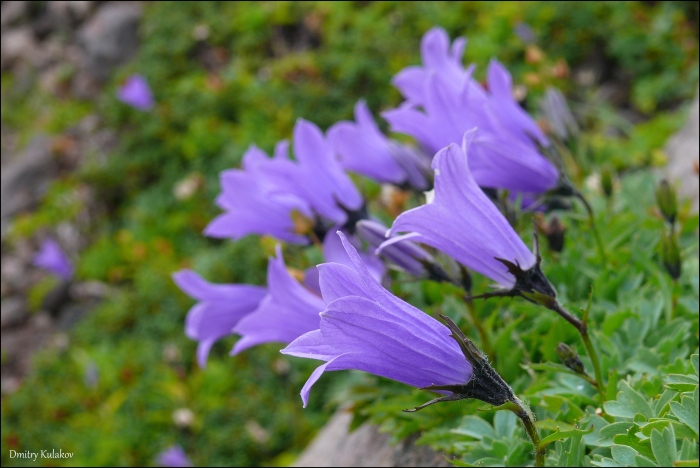Mountain Harebell
(Campanula lasiocarpa)
Mountain Harebell (Campanula lasiocarpa)
/
/

Dmitry Kulakov
CC BY 4.0
Image By:
Dmitry Kulakov
Recorded By:
Copyright:
CC BY 4.0
Copyright Notice:
Photo by: Dmitry Kulakov | License Type: CC BY 4.0 | License URL: http://creativecommons.org/licenses/by/4.0/ | Rights Holder: Dmitry Kulakov | Publisher: iNaturalist | Date Created: 2011-08-19T08:26:33-07:00 |

























Estimated Native Range
Summary
Campanula lasiocarpa, commonly known as Mountain Harebell or Alaska Harebell, is a perennial herb that thrives in the alpine and subalpine zones of northwestern North America, including Alaska, Washington, Alberta, British Columbia, the Northwest Territories, and the Yukon. It is typically found in meadows, rocky slopes, and tundra environments, where it contributes to the biodiversity of these high-elevation ecosystems. The plant reaches a modest height of 5-10 inches (13-25 cm) and spreads 6-12 inches (15-30 cm) wide. Its appearance is characterized by a clumping form with lance-shaped leaves and striking blue, bell-shaped flowers that bloom from late spring to early summer. The flowers are particularly showy, attracting pollinators such as bees and butterflies.
Mountain Harebell is valued for its cold hardiness and ability to thrive in rocky, well-drained soils, making it an excellent choice for alpine gardens, rockeries, and as a ground cover in cold, mountainous regions. It requires minimal maintenance once established and is relatively drought-tolerant, although it appreciates consistent moisture. In cultivation, it prefers full sun to partial shade and can adapt to a variety of soil types, provided they are well-draining. There are no major disease or pest issues, but it can be susceptible to root rot in poorly drained soils. This plant is not known to be invasive and does not have aggressive roots, making it a safe choice for most garden settings.CC BY-SA 4.0
Mountain Harebell is valued for its cold hardiness and ability to thrive in rocky, well-drained soils, making it an excellent choice for alpine gardens, rockeries, and as a ground cover in cold, mountainous regions. It requires minimal maintenance once established and is relatively drought-tolerant, although it appreciates consistent moisture. In cultivation, it prefers full sun to partial shade and can adapt to a variety of soil types, provided they are well-draining. There are no major disease or pest issues, but it can be susceptible to root rot in poorly drained soils. This plant is not known to be invasive and does not have aggressive roots, making it a safe choice for most garden settings.CC BY-SA 4.0
Plant Description
- Plant Type: Herb
- Height: 0.5-1 feet
- Width: 0.5-1 feet
- Growth Rate: Moderate
- Flower Color: Blue, Purple
- Flowering Season: Summer
- Leaf Retention: Deciduous
Growth Requirements
- Sun: Full Sun
- Water: Medium
- Drainage: Medium, Fast
Common Uses
Groundcover, Low Maintenance, Rock Garden
Natural Habitat
Alpine and subalpine zones, including meadows, rocky slopes, and tundra environments in northwestern North America
Other Names
Common Names: Mountain Harebell, Alaska Harebell, Iwa-Gikyo, Mountain Bellflower
Scientific Names: , Campanula lasiocarpa, Campanula algida, Campanula algida, Campanula lasiocarpa f. albiflora, Campanula lasiocarpa f. duplex, Campanula lasiocarpa subsp. lasiocarpa, Campanula lasiocarpa var. lasiocarpa, Campanula lasiocarpa var. latisepala, Campanula sajanensis
GBIF Accepted Name: